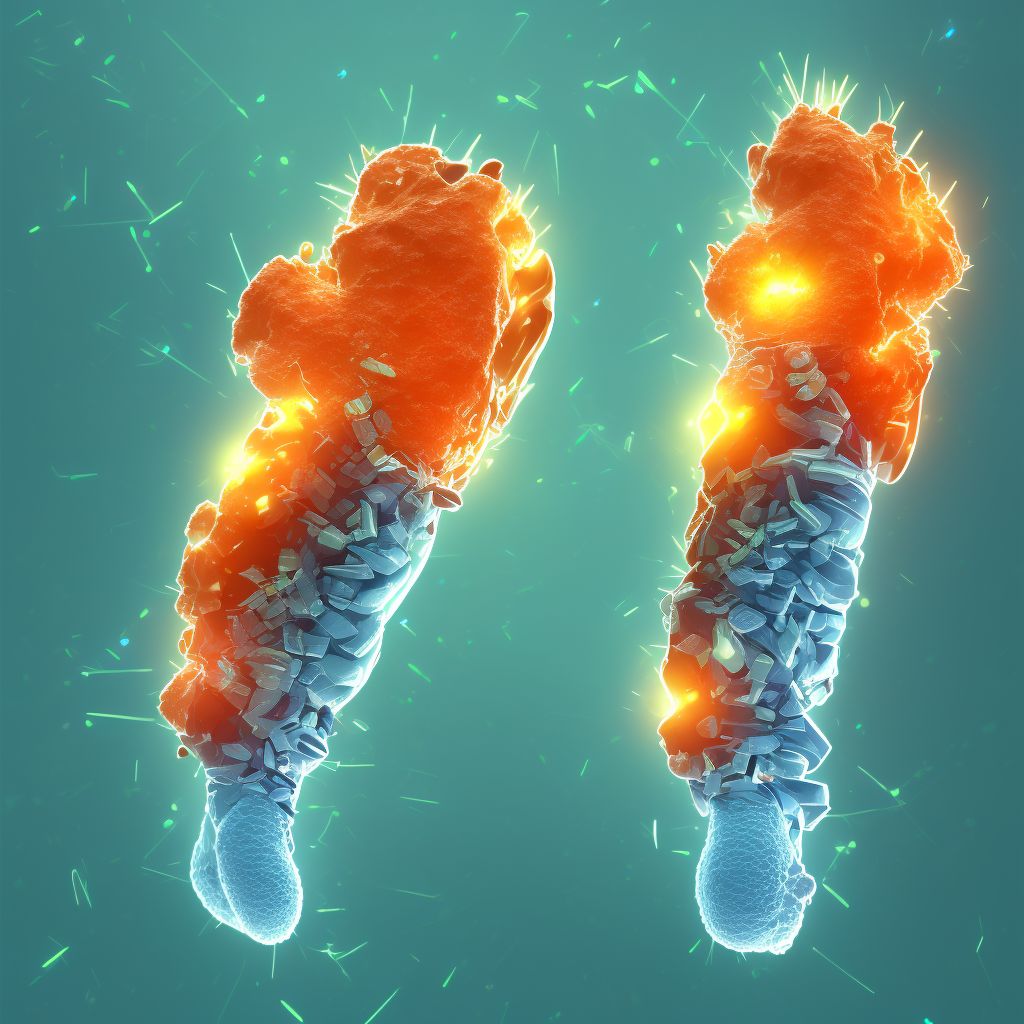
Displaced oblique fracture of shaft of unspecified tibia, subsequent encounter for open fracture type IIIA, IIIB, or IIIC with delayed healing Save
ICD-10 code: S82.233J
Disease category: S82.233: Displaced oblique fracture of shaft of unspecified tibia
Displaced Oblique Fracture of Shaft of Unspecified Tibia: Causes, Symptoms, and Healing Process
A displaced oblique fracture of the shaft of an unspecified tibia refers to a type of leg bone break that occurs at an angle and causes a misalignment of the bone. This injury often requires medical attention due to the severity of the fracture. In some cases, it may lead to an open fracture, resulting in an open wound and possible exposure of the bone.
Causes:
- High-impact trauma: This type of fracture is commonly associated with accidents, falls from heights, or sports-related injuries that involve a significant force applied to the leg.
- Weakened bone: Conditions such as osteoporosis or bone cancer can make the tibia more susceptible to fractures, even from minor injuries.
- Repetitive stress: Over time, repetitive stress on the tibia, such as running or jumping, can weaken the bone and increase the risk of fractures.
Symptoms:
- Pain and swelling: The most common symptoms of a displaced oblique fracture include localized pain and swelling in the leg.
- Deformity: The affected leg may appear visibly deformed, with abnormal angulation or rotation of the bone.
- Difficulty walking: Due to the pain and misalignment, walking or bearing weight on the leg becomes challenging.
Healing Process:
Healing time for a displaced oblique fracture of the tibia can vary depending on several factors, including the severity of the fracture and the overall health of the individual. However, it is important to note that this article does not cover treatment options.
Delayed healing is a common concern with this type of fracture. In cases where the fracture is open (type IIIA, IIIB, or IIIC), the risk of infection and delayed healing is higher. Prompt medical attention and appropriate treatment are essential to minimize complications and promote healing.
During the healing process, the body forms a callus around the fracture site. This callus acts as a bridge, connecting the broken bone segments and providing stability. Over time, the callus is gradually replaced by new bone tissue, restoring the leg's strength and function.
In conclusion, a displaced oblique fracture of the shaft of an unspecified tibia is a severe injury that requires medical attention. If you suspect such an injury, it is crucial to seek prompt medical care to ensure proper diagnosis and treatment. Remember to consult a healthcare professional for personalized advice regarding your specific condition.
Treatment of Displaced oblique fracture of shaft of unspecified tibia, subsequent encounter for open fracture type IIIA, IIIB, or IIIC with delayed healing:
Treatment Options for Displaced Oblique Fracture of Shaft of Unspecified Tibia with Delayed Healing
A displaced oblique fracture of the shaft of an unspecified tibia can be a challenging injury to treat. In some cases, the fracture may not heal as expected, leading to delayed healing. Fortunately, there are several treatment options available to address this condition and promote p...
To see full information about treatment please Sign up or Log in